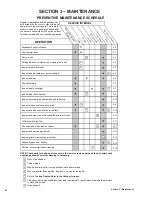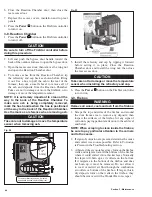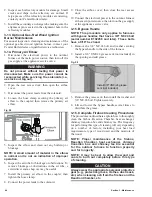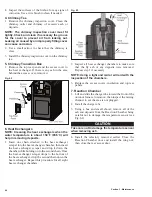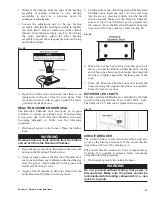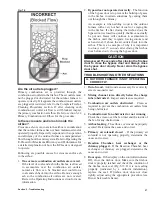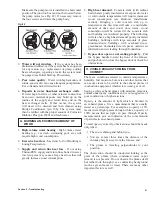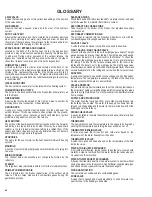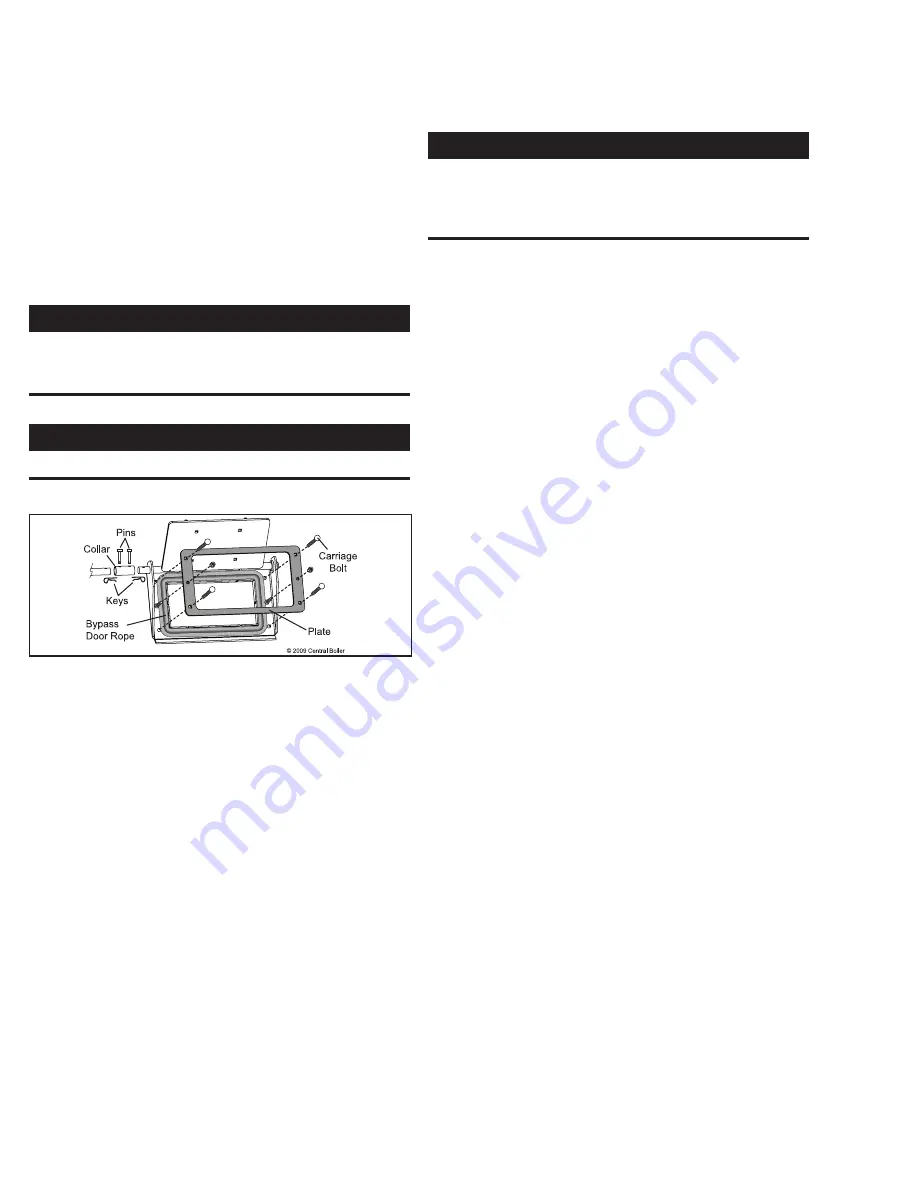
54
2. Open the airbox cover located at the rear of the
outdoor furnace.
3. Disconnect the wires from each of the solenoids,
disconnect the fan harness and disconnect the push-
wire connector from the transformer.
4. To test for a faulty component, connect one
component at a time (e.g., start with one of the
solenoids); then connect power to the outdoor
furnace. If the circuit breaker trips, the component
is likely faulty. If not, disconnect power to the
outdoor furnace and repeat the procedure until all
components have been tested.
CAUTION
Disconnect power to the outdoor furnace
before disconnecting a component and before
connecting a component.
BYPASS DOOR ROPE
WARNING
Remove all wood, coals and ash from the firebox.
Fig. 71
1. Working inside the firebox, remove the four nuts
securing the bypass door assembly and discard.
NOTE: If necessary, break the carriage bolts off
to remove. New bolts and nuts are provided in
the kit.
2. Remove the top rear panel and the access cover to
the heat exchangers; then remove the four carriage
bolts.
3. Remove the keys from the pins on the collar; then
remove the pins. Slide the bypass door assembly
and collar off the shaft and remove.
4. Remove the bolts securing the plate to the bypass
door; then remove the plate.
5. Remove the bypass door rope. Place the new bypass
door rope into position and secure with the plate and
bolts.
6. Slide the collar and bypass door onto the bypass door
shaft; then align the collar with the holes, install the
pins and install the keys.
7. Install the four new carriage bolts; then install the
access cover and top rear panel.
8. Working inside the firebox, install the four new nuts.
SOLENOID
1. Disconnect power to the outdoor furnace.
WARNING
Do not proceed without testing that power is
disconnected. Make sure the power cannot be
reconnected while servicing the solenoids (i.e.,
use lock out, tag out).
2. Open the airbox cover located at the rear of the
outdoor furnace.
NOTE: Smoke or creosote in the airbox is an
indication that the bypass door was closed
before waiting 15 seconds and/or the exhaust
flow through the bottom of the firebox is plugged.
After closing the firebox door, always wait for
15 seconds; then slowly pull the bypass door
handle toward the front of the outdoor furnace
and push down to close the bypass door.
3. Disconnect the wires from the solenoid that is to be
replaced.
4. On the solenoid to be replaced, straighten the cotter
pin that secures the air regulating disc to the solenoid
and remove the pin.
5. Mark the location of the solenoid to be replaced on
its mounting bracket so the replacement solenoid
can be installed in the same position.
6. Remove the four screws securing the solenoid to be
replaced to the bracket and remove the solenoid.
7. Install the replacement solenoid on the bracket.
Loosely install the four screws removed in step 6.
8. Align the replacement solenoid with the mark made
on the mounting bracket and tighten the four screws.
9. Inspect the cotter pin hole in the air regulating disc
for damage. If the hole is damaged, a new disc must
be installed.
10. Install the disc onto the air tube making sure the disc
fits evenly. Install the cotter pin through the solenoid
and disc; then bend the ends of the pin to prevent it
from falling out.
11. Connect the wires disconnected in step 3.
12. Manually lift the solenoid and let it fall several
times to ensure nothing can obstruct its operation.
Perform the same check on all other solenoids in
this compartment.
13. Close the airbox cover; then connect power to the
furnace and test solenoid operation.
NOTE: The factory settings for air regulating
discs are illustrated in Fig. 72.
Section 4 - Owner Serviceable Items
Summary of Contents for e-Classic 1450 IR
Page 17: ...15 Section 1 Outdoor Furnace Installation...
Page 29: ...27 Section 1 Outdoor Furnace Installation Fig 30 Fig 31...
Page 30: ...28 Section 1 Outdoor Furnace Installation Fig 32 Fig 33...
Page 66: ...64 E CLASSIC 1450 WIRING DIAGRAM Section 6 General Information...
Page 67: ...65 Section 6 General Information E CLASSIC 1450 WIRING DIAGRAM OPTIONAL POWER IGNITION...
Page 69: ...67 NOTES...
Page 70: ...68 NOTES...
Page 71: ...69 NOTES...

